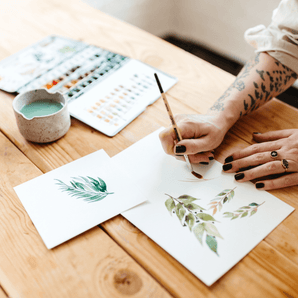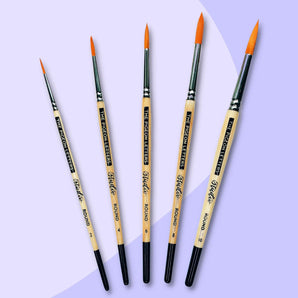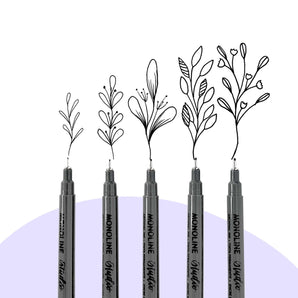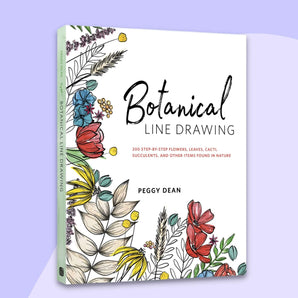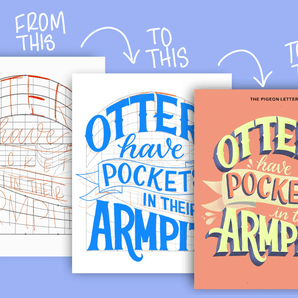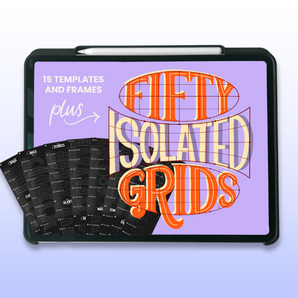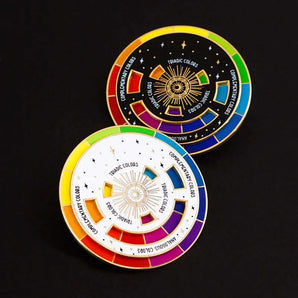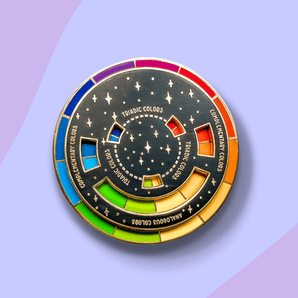Hi! I am Esther Peck, @estherpeck on Instagram, and the author of Lush & Blooms and A Guide to Floral Watercolour. I also hold online classes on Skillshare and Teachable.
I am so excited to share how to compose your watercolour florals with you.
I found that while many of my students have no problem with painting the florals and foliage after the lessons, they struggle with floral composition or how to even get started. I want to share 7 main elements on how to paint a successful floral wreath or painting:
- Focus
- Balance
- Unity
- Contrast
- Rule of Space
- Rule of Thirds
- Rule of Odds
1) Focus
First, our painting needs to have a focal point as our eyes will lead us to the most important thing or focal point in the painting. Without that, the viewers will be lost and quickly lose interest in the painting.
When you look at this bouquet, what catches your eyes? The details of the large peachy English Rose will first draw your attention towards the bouquet, and then the other filler flowers, leaves and berries.

2) Balance
A balanced painting does not need to be symmetrical.
I use different sizes of elements to balance the circular wreaths as shown below.
I have the teapot and cup that visually 'weigh' heavier to sit on the bottom of the wreath and balance them with smaller or seemingly lighter macarons, flowers, filler berries and plants.
A well-balanced design will give you a sense of calm.

3) Unity
By unity, we mean that the wreath should look connected, so that your eyes can flow from the focal point to the secondary elements.
It also means choosing complementary elements/florals to ensure that the wreath or design looks cohesive when put together as shown in the wreath below.
The teapot and teacup example above also shows how I use the complementary elements of macarons, flowers, filler berries and plants to group them together to form a tea party wreath.

4) Contrast
Contrast can be in terms of sizes, colours, angles and shapes of elements, which will add interest to your painting.
In the floral bouquets below, I painted roses in different sizes and at different angles which came together beautifully.

5) Rule of Odds
A painting usually looks more appealing when there is an odd number of subjects. It is interesting to know that we are more attracted to uneven composition.
So when you are painting a wreath, try to paint 2 large flowers with a side flower and some fillers.

6) Rule of Space
Leaving space in your painting creates a sense of motion or movement.
I like how this painting shows a portion of the hanging flowers from the garden instead of showing the full hedge of roses.

7) Rule of Thirds
Divide your image into 9 equal segments by 2 vertical and 2 horizontal lines. The points where they intersect is where your focal point should be.
In this cherry blossom painting, your eyes will be attracted to the large cherry blossom on the bottom right intersection.


About Esther Peck
Esther is a self-taught watercolourist based in Singapore. In 2018, she published 2 books, 'Lush & Blooms' and 'A Guide To Floral Watercolour'.
Her background as a graphic designer has helped her create artwork, designs and her self-published books which she sells online.
In addition, Esther is also a guest designer at Art Philosophy, which is a brand based in the United States. She is also an ambassador for Princeton Artist Brush Company, one of the largest brush suppliers in North America. Since 2015, Esther has taught numerous watercolour classes from the classic flower wreaths to realistic animals and landscapes.
Visit my website: estherpeck.com
IG: @estherpeck
YouTube: Esther Peck





